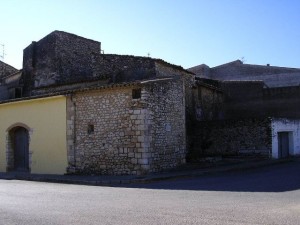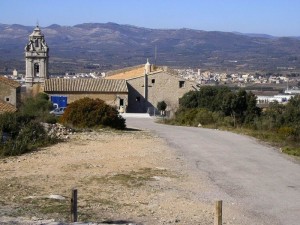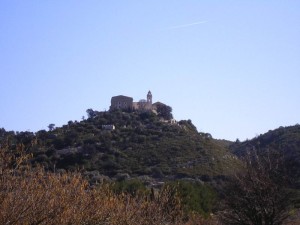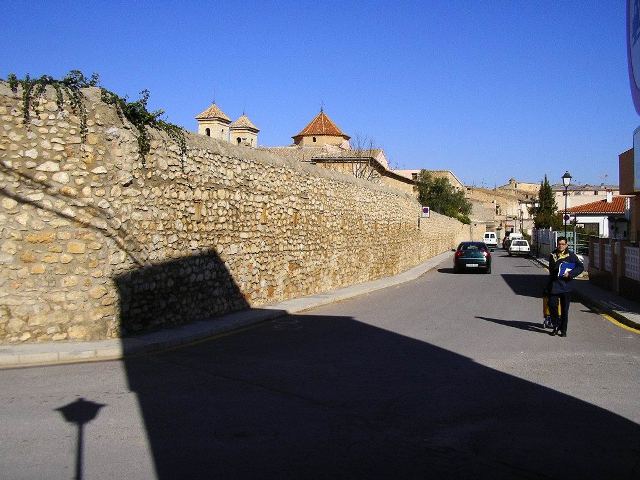In April a ‘friendly’ battle takes place every year at Almansa to remember the conflict there in 1707 when various European countries fought to decide the result of the War of Spanish Succession.
Unlike the Spanish Civil War or the Peninsula War, the War of Spanish Succession is not one that gets a lot of publicity, especially as it is one that has left a lot of wounds, being a war that divided the pro-French Spaniards on the side of King Felipe V of the House of Borbon and the pro-Austrian supporters of King Charles III of the House of Habsburg.
Like the Peninsular War against Napoleon, it was an international affair fought out in many countries by armies of many nationalities.
It was this international nature of the conflict that brought about the curious fact that the town of San Mateo, in the north of Castellón province, suffered a siege by French-Spanish troops, and was defended by an English Colonel, John Jones, along with British and local Valencian and Catalan citizens and troops.
The story of the siege came to light when the archivist of San Mateo, Tomás Segarra, discovered that there was a document about the siege in the British Library in London and obtained a copy, which he showed to me when I visited the town.
The 30 page document entitled “A Journal of the Siege of San Mateo” was printed and sold by Benjamin Bragge at The Raven in Paternoster Row in 1707, when it was typical to sell such broadsheets telling of military actions abroad involving British troops.
The document begins with a description of the town and of its population, reduced to 1,800 by the ravages of the plague.
Colonel John Jones was Governor of Tortosa in Catalonia and on Wednesday 16th of December 1705, he arrived with a company of English dragoons at La Jana, and sent dispatches to San Mateo explaining his intention to take control of the town and defend it against the troops of the Conde de Las Torres, one of the officers of the Duke of Anjou’s army.
Messages were sent to Valencia asking for troops to fight the British and the governor of the town then fulfilled his patriotic duty, fleeing during the night, never to be seen again.
On the 18th the British troops appeared before the walls and called upon the population to open its gates, San Mateo at that time being a walled city. Some of the defensive walls are still visible today.
The townspeople met and decided that the rules of war (actually a mathematical calculation of numbers of besiegers and defenders) allowed them to surrender with honour and submit themselves to the authority of King Charles III.
The troops marched in and the officers were taken to the Council Chambers where documents of loyalty were signed.
On the 20th news arrived that Valencia had surrendered 4 days previously and it seemed that the war against the House of Borbon was going well.
Jones set off to take Castellón on the 21st but then came news that the Duke of Anjou’s forces had taken Morella in Jones’s rear. A message was sent to Jones in Castellón calling upon him to return to defend San Mateo and another to Valencian troops known as ‘Miquelets’ in Peñiscola, calling upon them to hold the mountain pass at the forest of Ballibana.
Both tasks were accomplished by the 26th. Then a skirmish took place at the pass and later the Valencian troops fell back to San Mateo at the same time that supplies arrived from Tortosa to defend the town.
On Monday 28th the enemy, who had regrouped at nearby Catí, were within sight of San Mateo. The Franco-Spanish troops began to prepare an attack, believing that the city was undefended and preparing to (in the words of the pamphlet writer) “make another slaughter, to represent that which Herod committed….”
They were however met with several volleys causing a number of casualties and a fire-fight ensued all through the night.
The next day a letter was sent with a trumpeter calling upon the town to surrender, the first in a series of exchanges in which both sides assured the other that their position was hopeless and that they should withdraw.
The townspeople continued to construct their defences and letters to Valencia and Catalonia were secreted out asking for help.
On the last day of the year, as the local people began melting their pots and pans to make ammunition, reinforcements arrived for the Borbon besiegers from Morella.
Excavations were made to ‘undermine’ the walls through tunnels where mines would be exploded, while the defender fired from the ‘loop-holes’ in the walls.
One of the tunnels was flooded by the defenders, killing several of the enemy.
On the 3rd of January shots were heard nearby as a rescue force arrived from Castellón but was driven off, consisting as it did of enthusiastic but inexperienced peasant troops.
On the 5th January a letter arrived from Colonel Mahony, an Irish soldier in the service of the Duke of Anjou, offering an honourable surrender to Jones and threatening dire consequences if the offer were to be refused. The letter ends curiously with the enigmatic post-script: “I desire your honour will acquaint me, whether my Drum-Major be prisoner in the Town.”
A suitably bellicose reply was made, pointing out in a most gentlemanly fashion that “I will heartily serve you to the utmost of my power, in our own private affairs; but in this others are concerned, and I cannot desist without dishonour.”
The Drum Major incidentally had deserted, according to Jones, who signed his letter to his enemies always with the quaint expression: “I kiss your Honour’s hands.”
Heavy firing and smoke caused by the French burning all the trees they could cut down, continued for several days.
On the afternoon of the 7th, another message came from the Conde de Torres explaining that if Jones didn’t surrender, the Count’s soldiers would inevitably go on the rampage once the walls were breached, as was the practice in those times.
The Count assured Jones that he had carried out works to breach the walls and consequently and according to the articles of war, Jones sent an officer to view the works which, if as claimed, would allow him to surrender honourably rather than fight an impossible battle.
However, it turned out that “there were no other works than what his pen had made”.
 That night, in an attempt to intimidate the defenders, or perhaps from spite at having had their deception discovered, the besiegers set fire to and destroyed the church on the overlooking hill, which was none other than the church of the town’s patron saint, the Blessed Virgin ‘de Monte’.
That night, in an attempt to intimidate the defenders, or perhaps from spite at having had their deception discovered, the besiegers set fire to and destroyed the church on the overlooking hill, which was none other than the church of the town’s patron saint, the Blessed Virgin ‘de Monte’.
The defenders, outraged by this sacrilege, fired most furiously throughout the following day when, during a pause, one Brigadier Montenegro sent a trumpeter to ask if he might be returned some documents that had been in a trunk he’d lost during the skirmish at Ballibana.
The request was courteously refused.
On the afternoon of the 9th of January a great deal of activity was seen in the enemy camp, and troops were observed marching away towards Valencia.
News later arrived that the British Commander, the Earl of Peterborough, had arrived at nearby Traiguera with a sizeable army, having come from Barcelona to lift the siege.
The French fled in disarray, leaving behind a large part of their supply train and four hundred dead. The defenders’ casualties consisted of eleven dead and twenty seven wounded.
Apart from the church of ‘De Monte’, the French troops ransacked two monasteries and laid the surrounding countryside to waste, destroying what they could not use or take away.
Celebrations took place and no doubt many a barrel of local wine was drained by inhabitants and British soldiers alike in a prelude to the package holidays which would follow this early Anglo-Spanish collaboration.
The local people engraved a pedestal in Latin, which was placed in the local church, although nobody knows where it is today, and which stated: “This bastion built by John Jones, the British Mars, records his triumph in the Iberian wars.”
A sonnet was also written to honour him.
The siege of San Mateo was one of many minor events in the war of Spanish Succession where the histories of Spain and Britain became entwined, although today few people, according to San Mateo’s archivist, Tomás Segarra, seem to be aware or really care.

